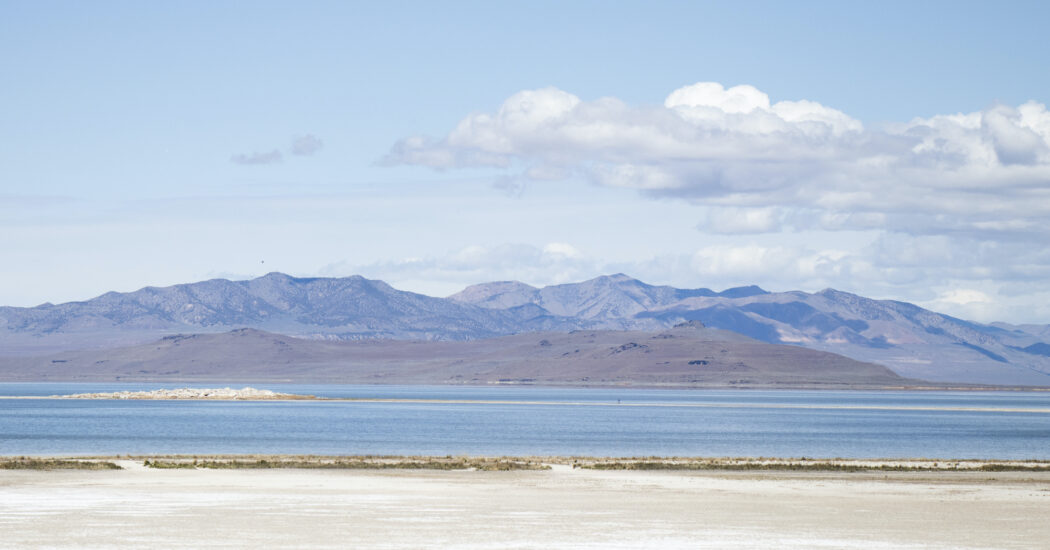Great Salt Lake may have a not-so-great future
Audio PlayerThe 32,000-year-old Great Salt Lake has hit record-low water levels and is not stopping anytime soon.
From its high in 1987, the lake has lost 10 feet in elevation, leaving lakebed and toxic dust exposed. So, what does this mean for Utah?
The dwindling water level threatens the lake’s economy, which is based on mineral extraction, brine shrimp fishing and recreational activities.
The official state assessment report predicts the potential cost of a drying Great Salt Lake at up to $2.17 billion per year.
The loss of the lake economy would also result in over 6,500 job losses.
Another issue is the toxic material laced through the dust and lake bed.
Antimony, copper, zirconium, arsenic and many more dangerous substances have accumulated over time from mining in the region.
“It’s like a bathtub without a drain. And (the lake) has a little bit of everything,” Molly Blakowski, a doctorate student and researcher from Utah State University, told KSL during an interview.
Currently, most of the toxic materials are protected by a hard crust. However, over time, the wind will erode this crust and send the poisonous materials airborne, affecting residents along the Wasatch border.
But the air isn’t the only thing becoming more toxic.
As the water level gets lower, the salinity in the lake gets higher.
This sharp increase in water salinity is making the lake uninhabitable for the brine shrimp that currently reside there. Large-scale shrimp die-off would start a ripple effect down the entirety of the food chain.
This would mean an estimated 10 million birds would also start to die off, including 90% of the eared grebe — a species of water bird — that rest and recoup from their migration at the Great Salt Lake.
“I guess you’d call it a gas station,” said Terry Messer, a wildlife specialist and USU professor. “It’s a resort for migratory wildlife and for native wildlife because it’s so rich in the food sources that it provides. It’s strategically located.”
Recently, Sen. Mitt Romney, with Utah Reps. Burgess Owens and Chris Stewart, introduced a bill called the Great Salt Lake Recovery Act.
The bill would build on existing water conservation and supply an additional $40 million toward the Great Salt Lake Watershed Enhancement Program.
In an article explaining the bill on the senator’s website, Romney called for action.
“Utah’s iconic Great Salt Lake is currently at the lowest levels ever recorded — for the second time in less than a year,” said Romney. “It is incumbent on us to take action now which will preserve and protect this critical body of water for many generations to come.”
Ellie Tenbrink, a USU student majoring in restoration of aquatic ecosystems and forest ecology, encouraged students to get involved.
“A big thing we can do for a lot of issues, especially for this one, is to write to your legislators and new senators, and let them know that you think this is an issue,” Tenbrink said. “If there’s enough public push, more things might be introduced.”
While the actions of a singular person may seem insignificant, small actions taken by many people can make a difference.
“We can all make a small dent on the problem,” Tenbrink said.
-Alivia.Hadfield@usu.edu
Featured photo by Bailey Rigby in summer 2020

